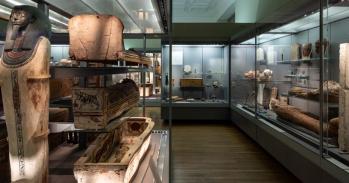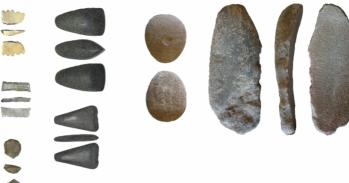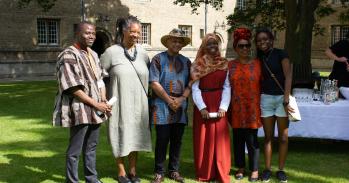
Research into the epic chronicling the adventures of the legendary Swahili ruler, Fumo Liyongo, has revealed messages that reach far beyond myth-history.
Research into the epic chronicling the adventures of the legendary Swahili ruler, Fumo Liyongo, has revealed messages that reach far beyond myth-history.
Liyongo breaks the silence of the subordination Swahili people experienced. This was the beginning of a pan-Swahili national consciousness.
Dr. Kenneth Simala
In the Western world he is barely known, but on the east coast of Africa, he is a folk icon equal to Robin Hood, and a name capable of arousing the interests and passions of any true Swahili.
Though shrouded in myth, Fumo Liyongo was a Swahili Chieftain who lived at some point between the 9th and 13th centuries. He was a hero, warrior and poet, whose life and undertakings have become the stuff of legend, and are celebrated in numerous traditional poems, stories and songs, which remain deeply embedded in the cultural imagination of the Swahili people.
Now, however, it is emerging that Fumo Liyongo may be more than a simple myth. After a six-month project at the University of Cambridge, Dr. Kenneth Simala, an expert in Kiswahili literature and linguistics, has begun to see the Liyongo narrative – and in particular a 232-stanza, epic poem, that bears his name – as a symbolic, coded message from the past, that also marks the birth of pan-Swahili identity.
His paper, which is being published following an academic exchange programme at Cambridge’s Centre of African Studies, argues that the “Fumo Liyongo” epic is not just a representation of life as it was, but a sprawling metaphor about what happens when civilisations collide, and a warning about the “future history” of the world.
“Liyongo is one of the most remarkable figures in Swahili culture,” Dr. Simala said. “His works have dominated Swahili life and went on to inspire generations of Swahili poets and writers.”
“But what this attests to is something we also tend to overlook: Liyongo is not just a romantic legend with a historical basis. He is a representation of the depth, achievement and ambience of Swahili culture. From his mythology, we are supposed to make deductions both about times that have passed, and about a modern day message on the need for civilisations to engage in dialogue.”
Liyongo himself is believed to have written many of the poems and songs about his life, including the great epic itself. Passed down for centuries as an oral tradition, it describes his adventures along the Swahili coast (now occupied by parts of modern-day Somalia, Kenya, Tanzania and Mozambique), and in particular his interactions with other peoples who came to explore, trade with, convert or conquer the African territories he ruled over.
Although it is unclear when exactly Liyongo lived, as a local chieftain he would have ruled the northern part of the coast of East Africa at a time when it was a major cultural crossroads. During the Middle Ages, the region had flourishing links with China, India, South-East Asia, Persia and Arabia. Against that backdrop, the narrative describes his adventures as he struggled to resist and contest the external forces with which the region was coming into contact.
Some of the stories have strong parallels with western folklore. In one, Liyongo is lured to an archery tournament by a rival king who intended to capture him, but thanks to his skill he both won the tournament and escaped. It is clearly reminiscent of the “silver arrow” incident in the Robin Hood legend, and suggests a deeper origin myth behind both.
Other episodes have a more distinctively African flavour. In one, Liyongo finds himself imprisoned after a war of succession. He begins to sing coded messages, which prove so captivating that the people begin to dance. Amid the confusion, he is able to escape.
Researchers have been perusing the Liyongo legend, albeit spasmodically, for years, but few have viewed it as more than a beautiful and well-constructed myth. Simala sees it differently, arguing that it represents the Swahili search for identity during subsequent phases of colonisation. He believes the epic in particular is almost a template for how to handle such challenges not through conflict, but dialogue, rendered in metaphorical form.
His paper argues that much of the poem is implicitly concerned with modernity, and the modernising influence of foreign invaders. The epic bestrides indigenous ideas about modernity – those of the Bantu African civilisations – and earlier, Arabic and Islamic modernising influences that had come from overseas.
“Liyongo breaks the silence of the subordination Swahili people experienced and begins to challenge the consequences of that latter modernity,” he said. “His activities represent the fight for integrity, dignity and security that continued for generations. This was the beginning of a pan-Swahili national consciousness.”
As a result, the poem deals with themes such as inclusion and exclusion, identity and multicultural justice. Centuries ahead of the concepts underpinning that of a United Nations, Liyongo sees the resolution as being one of collective identity and common justice. This laid the basis for a Swahili experience of “nation-becoming”, Simala argues, but more broadly it has a deeper message about the formation of a collective identity and a cultural code in the face of inequalities that might otherwise prevail.
Because the Liyongo epic was passed on as an oral tradition it has constantly had to be presented afresh and revitalised for new audiences. In many ways this has aided its longevity, giving it relevance to Swahili communities ever since as they faced similar problems and later waves of colonisation, which were political, cultural and economic.
Yet its message goes further still: “The poem is both inside and outside time,” Simala writes. “It is in time because it evokes a time, place and people. It is outside time because it goes beyond that and speaks about our common humanity. It is fresh inspiration for modern society that dialogue and reconciliation are possible, so long as all parties are willing and open to engage with each other with respect and trust.”
This work is licensed under a Creative Commons Licence. If you use this content on your site please link back to this page.





